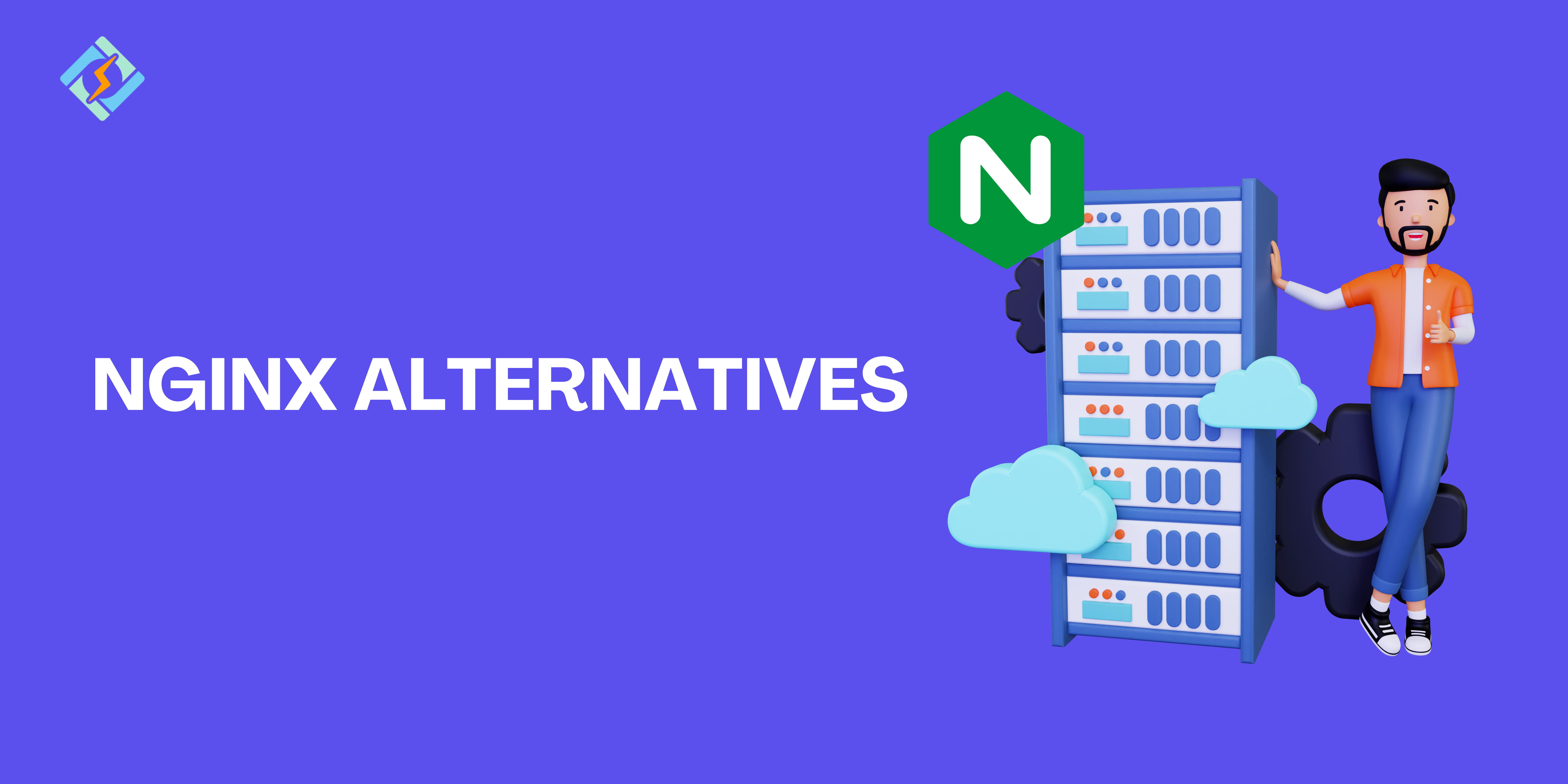The choice of the perfect solution for your website or application is one of the factors to consider in fast-paced web server technology. In this article, we are going to delve into the many Nginx alternatives that have emerged recently while illuminating the complex landscape of web server software so you may make the best choice for your next project. Whether you are looking for performance improvements, easier setup, or just specific features, this in-depth guide will give you an overview of some alternative web server solutions that might suit your needs.
Is there anything better than NGINX?
NGINX is a popular and strong web server and reverse proxy server. It is renowned for its performance, scalability, and flexibility. It’s widely used for hosting websites, serving as a load balancer, and handling various web-related tasks. However, alternatives can be adopted.
Top Nginx Alternative
Discover broader solutions of web servers besides Nginx There are alternatives to help fill specific needs and tastes a webmaster may have. Probably it’s something faster, something much easier to configure, or something offering specific features, which this article will introduce to you the diversity in options to make the right choice for your project.
1. LiteSpeed
LiteSpeed, often people address it as “LiteSpeed Web Server” or simply “LSWS.” It is one of those high-performance alternatives to Nginx, gaining attention in these recent years. This web server is famous for its great speed and efficiency. It is a more than excellent alternative for websites and applications with high volumes of traffic. The event-driven architecture ensures efficient handling of concurrent connections by consuming fewer server resources.
In addition, LiteSpeed supports Apache configurations, so people who have an existing application dependent on Apache configurations can switch to LiteSpeed without fuss.
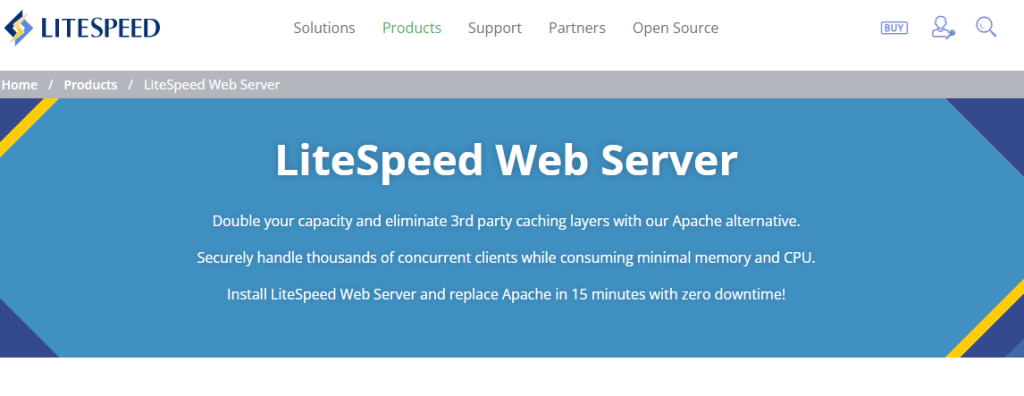
Features
Below are the key features of LightSpeed.
Get exclusive access to all things tech-savvy, and be the first to receive
the latest updates directly in your inbox.
- Speed Optimization
- HTTP/2 Support
- Load Balancing
- SSL Acceleration
- Cache Management
- Security Features
- DDOS Protection
- Web Application Firewall
- PHP Process Management
- Rewrite Rules
- Content Compression
- IPv6 Compatibility
- WebSockets Support
- Virtual Hosts
- Dynamic Content Caching
- Server-level Permissions
- Real-time Stats
- Easy Integration
- Control Panel
- HTTP/3 Support
Pricing
Below is the pricing of LightSpeed. You can find the details here.
| Free Starter | Site Owner | Site Owner Plus |
| $0/mo | $10/mo | $16/mo |
2. Caddy
Caddy is an innovative web server and reverse proxy server that has received attention regarding its simplicity and flexibility. Most of the traditional web servers are mature and offer excellent usability, while Caddy was developed on the foundation of usability concerning both end users as well as expert developers.
Caddy is indeed this innovative and user-friendly web server and reverse proxy server that swiftly stole the hearts of users into its basket. Of course, many web servers come with several difficulties for beginners but Caddy is planned with ease in view, making it a great tool even for beginners as well as veteran developers alike.
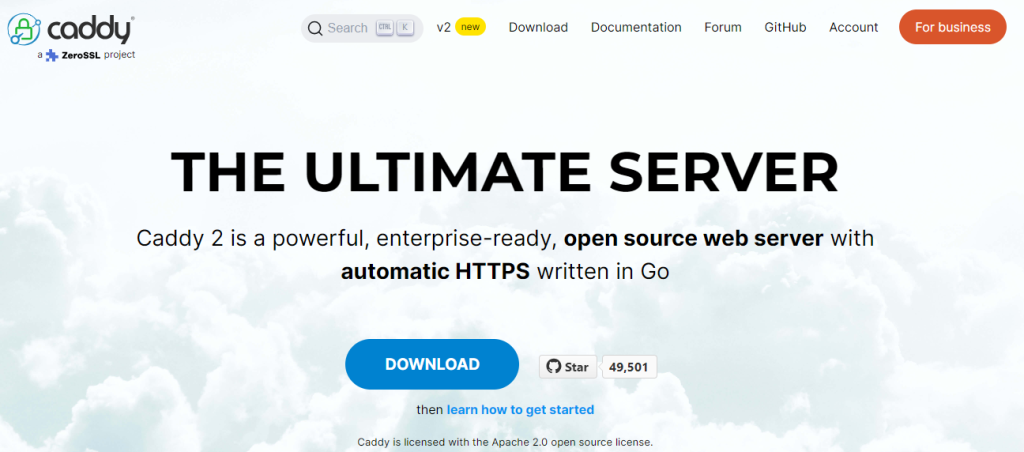
Features
Below are the key features of Caddy.
- Automatic HTTPS
- HTTP/2 Support
- Simple Configuration
- Dynamic Site Generation
- Reverse Proxy
- Integrated Plugins
- ACME Protocol
- Multi-platform Compatibility
- Active Community
- Let’s Encrypt
- Automatic Certificates
- Secure by Default
- Load Balancing
- WebSockets Support
- Extensible Architecture
- Efficient Performance
- Self-hosted DNS
- Server Metrics
- Virtual Hosting
- WebSockets Proxy
Pricing
Caddy is available for both personal and commercial use at no cost.
3. OpenLiteSpeed
OpenLiteSpeed, shortly referred to as OLS, is a high-performance, absolutely free, fully open-source web server and the alternative to other popular solutions, among which one may mention such powerful solutions as Apache and Nginx. Speaking of speed, OpenLiteSpeed has become highly popular lately, focusing on efficiency and how it is simple to use.
OpenLiteSpeed is fast and lightweight. It can support hundreds of thousands of concurrent connections simply because the event-driven architecture uses very low server resources.
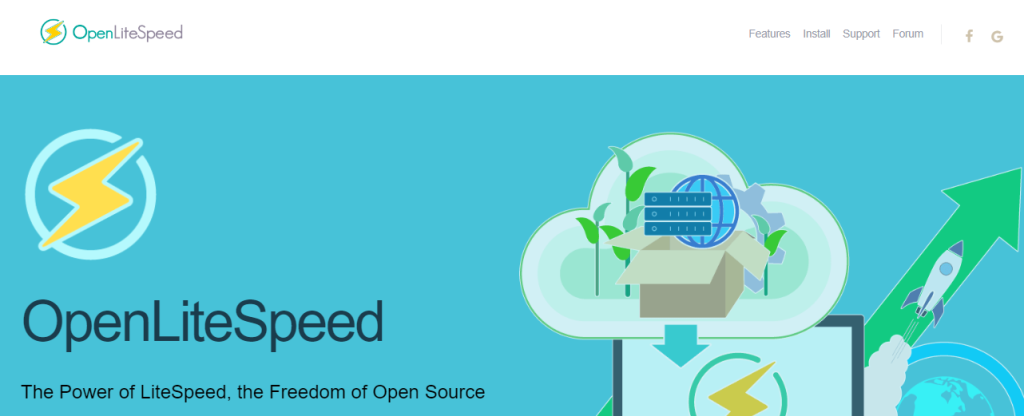
Features
Below are the OpenLiteSpeed features.
- High Performance
- Easy Configuration
- Security Focus
- LiteSpeed Cache
- HTTP/3 Support
- SSL Integration
- Web Firewall
- Compatibility
- Real-time Metrics
- Active Community
Pricing
OpenLiteSpeed Web Server is of no cost.
4. Lighttpd
Lighttpd’s popularity lies in its fast service of web content and low demand for server resources.

Lighttpd is known predominantly because it uses minimal memory and resource usage. This makes it the preferred solution for resource-constrained servers popular websites, or those looking to minimize loads on their servers.

Features
Below are the key features of Lighttpd.
- Lightweight Design
- Efficient Resource Usage
- FastCGI Support
- Event-driven Architecture
- URL Rewriting
- FastCGI Cache
- Security Features
- SSL/TLS Support
- IPv6 Compatibility
- Virtual Hosting
- Load Balancing
- Active Community
- Cross-platform Support
- Reverse Proxy
- Chroot Support
Pricing
Lighttpd is open-source and free to use.
5. Apache HTTP Server
Apache HTTP Server is well known for its stability and reliability. It has long provided stable power for websites and applications for industries and at scales of various dimensions.

Features
Below are the key features of Apache HTTP Server.
- Robust Reliability
- Open Source
- Modular Architecture
- Multi-Platform Compatibility
- High Performance
- Scalability Options
- Security Features
- .htaccess Support
- Virtual Hosting
- URL Rewriting
- Extensive Documentation
- Active Community
- Third-Party Modules
Pricing
Apache HTTP Server is open-source and free.
6. Varnish Cache
Varnish Cache is a free, open-source HTTP accelerator and reverse proxy server that makes web applications and websites more visually faster by storing a copy of web content in the memory cache, thus allowing subsequent requests for the same content at super-fast speeds, hence offloading the burden from the backend web servers.
Varnish is a great tool for caching static assets, HTML pages, and API responses in the memory: when some content is requested a lot, it can simply be output from the cache instead of hitting the server so decreases server load and increases the response time.

Features
Below are the key features of Varnish Cache.
- Speed Acceleration
- Caching Power
- Reverse Proxy
- Customizable Rules
- Cache Invalidation
- Load Balancing
- SSL/TLS Support
- Real-time Monitoring
- HTTP/2 and HTTP/3
- Extensive Ecosystem
- Scalability
- Active Community
- Enterprise Version
Pricing
Varnish Cache is free of cost.
7. Microsoft IIS
Microsoft Internet Information Services (IIS) is free, versatile web server software developed by Microsoft for its Windows Server Operating Systems. It plays a central role in hosting a website, web application, or services on a Windows-based server. From the integration into the Windows Server ecosystem, with IIS you will be able to access simple management and configuration through familiar Windows interfaces and tools.

Features
Below are the features of Microsoft IIS.
- Windows Integration
- ASP.NET Support
- PHP Compatibility
- Scalability Options
- Security Features
- FTP Server
- Load Balancing
- WebSockets Support
- URL Rewrite
- Active Directory Integration
- Centralized Logging
- Application Pools
- Extensible Modules
- Web Farm
- Real-time Monitoring
Pricing
As is typical for a central Microsoft offering, it exclusively operates on Windows operating systems and comes included at no additional cost for users.
8. HAProxy
HAProxy is a powerful and multi-purpose open-source load balancer and proxy server software from High Availability Proxy. It operates in high-availability web applications by efficiently distributing incoming network traffic across several servers or backend services.
HAProxy can be deployed to ensure performance optimization and the continuance of smooth service delivery within data centers, cloud environments, and production-grade web applications.
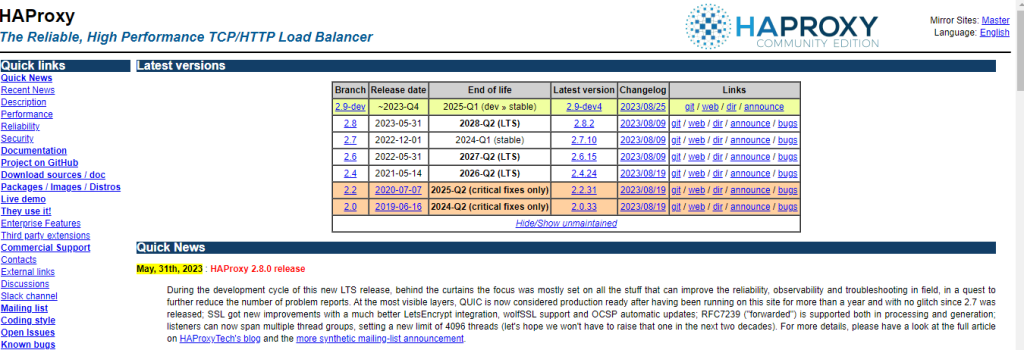
Features
Below are the key features of HAProxy.
- Load Balancing
- SSL Termination
- High Availability
- Reverse Proxy
- Health Monitoring
- Access Control
- Rate Limiting
- Logging & Stats
Pricing
An open-source, free HAProxy provides a high-availability load balancer and reverse proxy for the distribution of requests across multiple servers, with additional support for TCP and HTTP applications.
9. Traefik Proxy
Traefik is an open-source tool. It has achieved popularity by its ease of use, flexibility, and handling of dynamic, container-based environments.
Traefik is designed with containerization in mind, and it has emerged as a popular choice for orchestrators like Docker Swarm, Kubernetes, etc. It automatically discovers and routes traffic through containers or services during deployment and scaling.
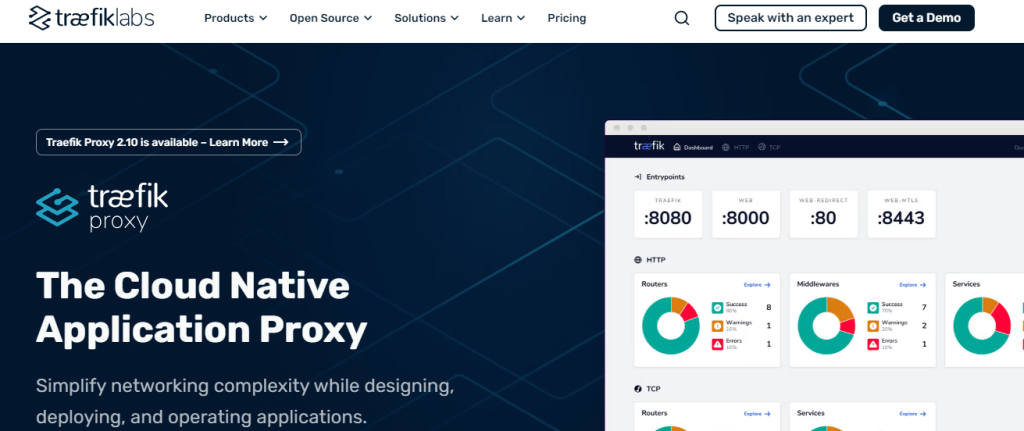
Features
Below are the key features of Traefik Proxy.
- Container Integration
- Dynamic Routing
- Automatic SSL
- Load Balancing
- Circuit Protection
- Middleware Support
- Health Checks
- Metrics Insight
- Web Dashboard
- Ingress Control
- Extensible Configuration
- Active Community
- Commercial Support
Pricing
Check the pricing plans of Traefik Proxy here.
10. Squid Proxy Server
Squid Proxy Server is an open-source caching and forwarding HTTP web proxy popularly used on a large scale. It serves as a middle entity between the client device – perhaps a computer or a smartphone and the web servers of interest to forward and cache requested web content.
In squid, copies of the web content are stored locally so that fetching data from remote web servers is not necessary for subsequent requests. These caches help accelerate access to frequently visited websites while also decreasing network traffic.

Features
Below are the key features of Squid Proxy Server.
- Content Caching
- Reverse Proxy
- Access Control
- SSL Inspection
- URL Filtering
- Traffic Logging
- Load Balancing
- Bandwidth Management
- ICAP Integration
- Transparent Mode
- High Availability
- Community Support
Pricing
Squid Proxy Server is available free of cost.
11. Abyss Webserver
Abyss Web Server is the lightweight, pretty easy-to-use, and feature-rich web server software that can be used on the internet to serve one or more web pages and applications. These conditions make it pretty ideal for personal websites, small to medium-sized businesses, development, and testing environments.
Abyss Web Server is also known for its low memory footprint and a pretty efficient way of resource utilization which allows it to be installed on any minimalistic hardware or virtual machines.
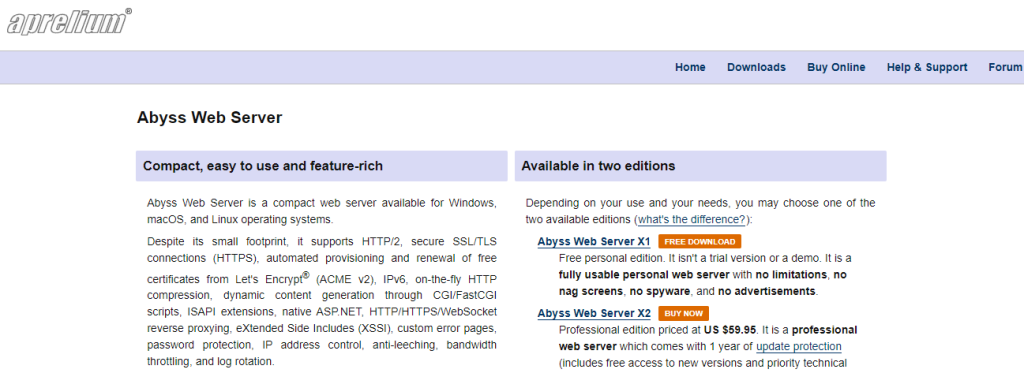
Features
Below are the Abyss Webserver’s key features.
- Lightweight Server
- Cross-Platform
- User-Friendly
- Security Focus
- Virtual Hosting
- Dynamic Scripting
- Logging Insights
- CGI and FastCGI
- Reverse Proxy
- IPv6 Compatibility
- Custom Errors
- Access Control
- Open Source
Pricing
Find the pricing in detail here.
12. Tomcat
Tomcat is a cross-platform, open-source web server and servlet container for hosting Java-based web applications and services released under the Apache Software Foundation. Tomcat, renowned especially for providing a reliable environment in which to run Java Servlets and JavaServer Pages, is a pure Java web server supporting the HTTP 1.1 protocol.

Features
Below are the features of Tomcat.
- Servlet support
- Web applications
- Scalable architecture
- HTTP server
- JSP support
- Java-based
- Cross-platform
- Extensible design
- Secure environment
- Management tools
- Clustering support
- Robust performance
- Open source
- Community-driven
- Integration options
Pricing
Apache Tomcat is a free-of-cost server.
13. Cherokee
Cherokee is an open-source web server and reverse proxy server software for serving web pages, web hosting control panel, and network traffic administration. Known for its speed, scalability, and ease of use, this promises to be a great fit for many roles in hosting and proxying webs.
Cherokee comes with an easy web-based interface to configure the server, so setting up and managing configurations even for the least-experienced users in server management can be achieved.
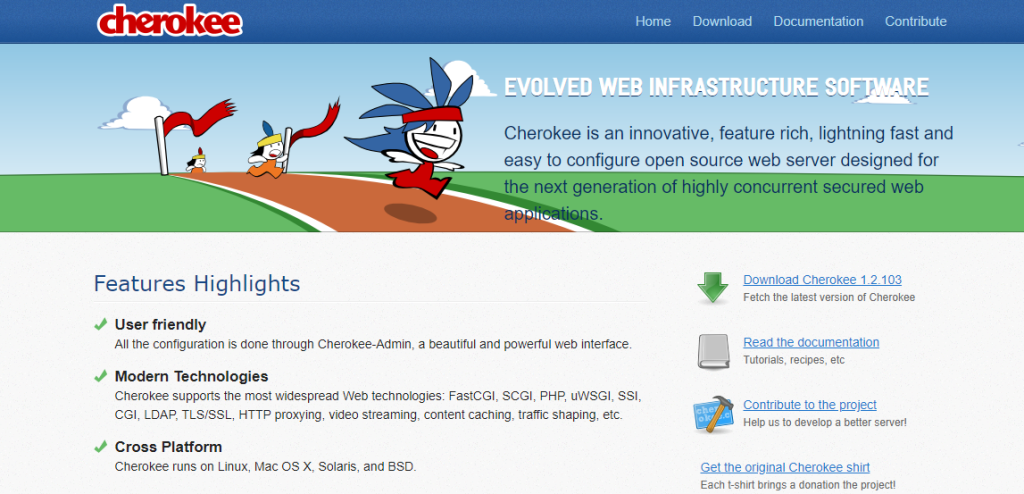
Features
Below are the features of Cherokee.
- User-Friendly
- Lightweight Performance
- Cross-Platform
- Security Focus
- Load Balancing
- Scripting Support
- Virtual Hosting
- Custom Errors
- URL Rewriting
- Content Compression
- Monitoring Logs
- Community Support
- Reverse Proxy
Pricing
The Cherokee server is open-source and free of cost.
Which is better NGINX or HAProxy?
Below is the comparison of NGINX and HAProxy
| Feature/Aspect | NGINX | HAProxy |
|---|---|---|
| Primary Use Case | Web server, reverse proxy, web acceleration | Load balancer, proxy server |
| Load Balancing | Limited capabilities (Layer 4) | Advanced load balancing (Layer 4 and Layer 7) |
| SSL/TLS Handling | Supports SSL/TLS termination | Supports SSL/TLS termination |
| Protocol Support | HTTP, HTTPS, and various protocols | HTTP, TCP, UDP, and various protocols |
| Performance | High-performance for web content delivery | High-performance load balancing |
| Configuration | Relatively easy to configure and well-documented | Configuration may require more expertise |
| Versatility | Versatile, suitable for various web-related tasks | Specialized for load balancing and proxying |
| Community Support | Large user base and extensive community support | Community support available |
Can HAProxy replace NGINX?
HAProxy and NGINX serve different purposes mainly. So, would depend on your use case and requirements whether or not HAProxy can replace NGINX. To put it simply, HAProxy and NGINX are not necessarily replacements for each other because of the difference in primary purpose.
However, you can use both in some configurations for different needs within your infrastructure. It’s just a choice based on the specifics of your need and whether you want some extra load-balancing features or more robust web server features.
FAQs
Why investigate alternatives to Nginx?
Although Nginx is a very popular and mighty web server, thinking ahead for other solutions would assist users in searching for particular solutions to meet their needs or provide other differences that make it more unique in comparison to other alternatives.
What are some of the main features of LiteSpeed?
LiteSpeed has amazing speed, event-driven architecture, is compatible with Apache configurations, and includes a multitude of performance and security feature
Is Caddy suitable for beginners?
Yeah, Caddy is very user-friendly and easy to configure; hence, it is just ideal for beginners as well as people experienced with development.
What does Varnish Cache do?
Varnish Cache is an HTTP accelerator or reverse proxy server that speeds up or improves web applications by storing content in memory for better performance whenever a website’s content is frequently accessed.
What are some advantages of Lighttpd?
It is often admired for its lighter model of design, as it consumes fewer resources and suits usage on servers with a limited number of resources or websites that have high traffic.
Conclusion
To wrap up, the days when the right choice of web server technology for your website or application was a minute detail are gone. With Nginx being one of the most popular choices, it should be out of the question, as this world of web server software is surely full of stability and not moving an inch. In this article, many Nginx alternatives were discussed with their specific strengths, unique features, and advantages. Whether it is speed, flexibility, versatility, or specialized capabilities, this in-depth guide has introduced a broad range of options to suit the particular needs of your project.
